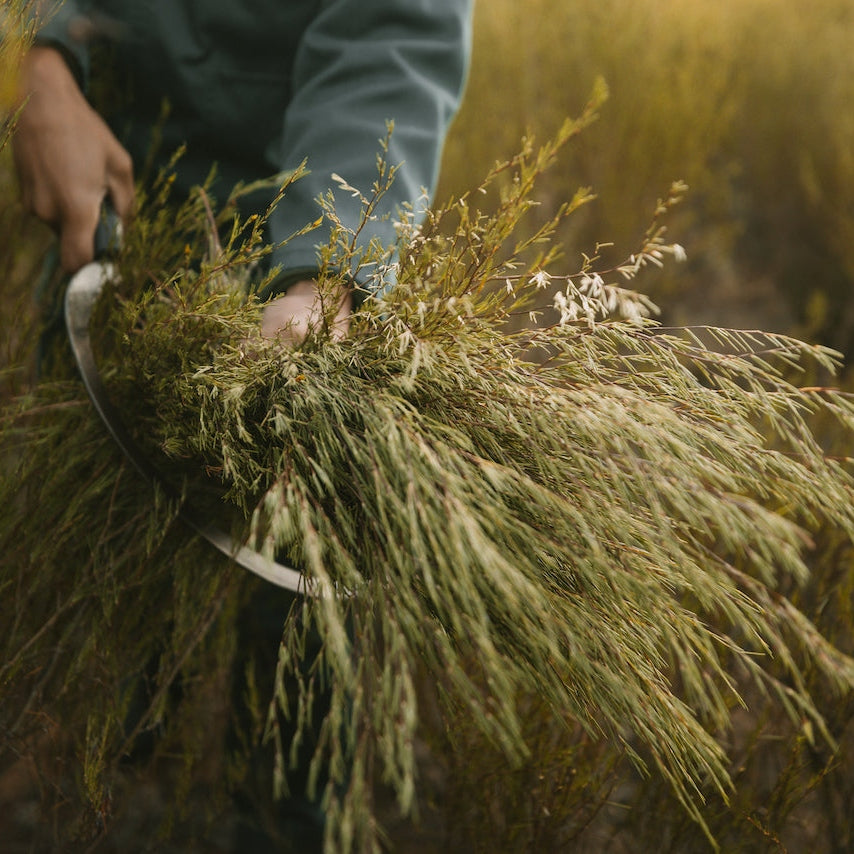How to Grow Your Own Rooibos & Celebrate South Africa’s Mighty Herb
Dom de Villiers
Over the years we have been dedicated to growing and crafting organic Rooibos, a plant deeply rooted in South African soil and tradition. Rooibos is more than just a tea; it’s part of our culture, a symbol of the Cederberg’s rugged beauty, and a gift from nature with powerful wellness properties.
As farmers of this precious plant, we’re often asked if one can grow this crop at home, and the answer to this is definitely yes. While Rooibos naturally thrives in the wild conditions of the Cederberg, with a little know-how and patience, you can cultivate your own Rooibos at home, even beyond the Western Cape.
Whether you’re an avid gardener, a herbal tea lover, or simply someone who wants to pay tribute to this incredible indigenous plant, here’s how you can start growing your own Rooibos.
Why Grow Rooibos at home
Firstly, we would like to share some of the benefits of growing Rooibos, or any plant for that mater, at home. When growing plants, one reconnects with nature, allowing for a deeper appreciation for plants and for nature. Rooibos, in particular, has many health benefits, therefore growing it yourself, one can access these benefits by yourself. Rooibos is rich in antioxidants, supports digestion, and is naturally caffeine free. This make it a whole addition to your garden and tea rituals. Growing Rooibos is also supporting local biodiversity. As Rooibos is part of South Africa's fynbos biome, by growing it at home you are helping celebrate and preserve indigenous plant species. Lastly, growing your herbs and food is a step towards self sufficiency and building a sustainable future.
How to Grow Rooibos in Your Garden
1. Choose the Right Seeds
Start with quality Rooibos seeds from a trusted source. Rooibos is a legume, native to sandy, well-drained soils.
2. Mimic the Cederberg Conditions
- Sandy, acidic soil with a pH of 4.5 to 6.
- Full sun and a dry, Mediterranean-type climate.
- Minimal water once established—Rooibos doesn’t like “wet feet,” so good drainage is key.
If your soil isn’t naturally sandy, mix it with river sand or perlite to improve drainage.
3. Scarify Your Seeds
Rooibos seeds have a tough outer coating. Traditionally, wildfires in the Cederberg help them germinate. At home, you can lightly scarify seeds by rubbing them with sandpaper or soaking them briefly in hot water (not boiling) before planting.
4. Plant with Care
- Sow seeds in early spring (September-November).
- Plant about 1cm deep in seed trays or directly into your garden bed.
- Keep soil moist but not soggy during germination (this can take 2-3 weeks).
5. Transplant and Tend
Once seedlings are about 5-10cm tall and strong enough to handle, transplant them into a sunny, well-drained spot. Rooibos plants grow into hardy shrubs and can reach up to 1.5 meters.
6. Harvest with Heart
In about 12-18 months, you can begin harvesting. Trim young stems and leaves in late summer, allowing new shoots to regenerate for the following season.
From Garden to Teacup
Once harvested, you can:
- Ferment: Lightly bruise and leave the leaves in a warm, moist environment to ferment for that iconic red-brown colour and sweet flavour.
- Dry: Lay the leaves out in the sun or a well-ventilated space until fully dried.
- Brew: Steep your homegrown Rooibos leaves in hot water, and enjoy the fruits of your labour.
A Tribute to Our Heritage
For us, Rooibos is more than a crop—it’s a part of who we are. By growing your own Rooibos, you’re nurturing a plant that has sustained generations, contributed to wellness worldwide, and stands as a symbol of South African resilience.
So why not get your hands in the soil and grow a little piece of the Cederberg in your own garden? Your teacup will taste that much sweeter knowing it came from your own care.
